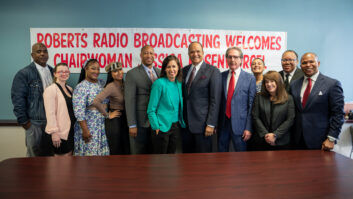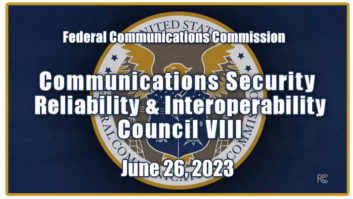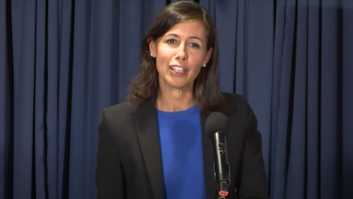FCC Chairwoman Jessica Rosenworcel has laid out three ways in which the federal government can reset U.S. spectrum policy for a future that is even more connected.
Speaking to the NTIC Spectrum Policy Symposium in Washington Tuesday, she said: “First, we need to extend the FCC’s auction authority — and get creative when we do.” She said the FCC has had the authority to hold spectrum auctions for nearly three decades and that this has been good for wireless innovation and economic growth., but that the authority will expire at the end of this month if Congress doesn’t extend it.
She said that with the reauthorization, “we have a golden opportunity to use the billions of dollars that FCC spectrum auctions raise to build the public infrastructure this country needs. And Congress could start with using future auction revenues to fund the nation’s transition to next-generation 911.”
Second, Rosenworcel said the country needs more mid-band spectrum in the pipeline. “We need to keep up our efforts to find more airwaves to fuel the mid-band spectrum pipeline, following our successful auctions of the 3.45 and 2.5 GHz bands … these are the airwaves that are essential for 5G services to reach everyone, everywhere.” She also mentioned the need to look ahead for mid-band spectrum to support 6G service such as the 7-16 GHz range. She said she has shared a draft Notice of Inquiry with NTIA that would explore repurposing spectrum in the 12.7 -13.25 GHz band for next-generation wireless technologies.
[See Our Business and Law Page]
“Third, we need to consider receiver performance — to have more spectrum security in the future.” She highlighted the commission’s current NOI on receiver performance. “It asks about incentives, guidelines, regulatory requirements and procurement practices that could help create a more transparent and predictable radiofrequency environment for all users. It’s time to consider these concepts because, if we get them right, we will have more airwaves available for new services.”
Rosenworcel told the symposium attendees that the evolution of wireless communications demands that regulators think differently.
“The focus on phones will give way to connectivity that touches everything in the economy. In fact, if we do this right, our phones will be the least interesting part of our wireless future. Because we are on the cusp of new forms of connectivity that will boost productivity and make industrial processes safer in factories, shipyards and warehouses. We will see fresh competition in the delivery of household broadband, increasing the number of ways families get online. Plus, using next generation wireless technology in the power, transportation, and manufacturing sectors could lead to emissions savings that could help put us on course to reach future climate targets.”
Rosenworcel noted that the FCC and NTIA recently reinstated high-level meetings and updated its memorandum of understanding in hopes of working together more efficiently on national spectrum strategy.











